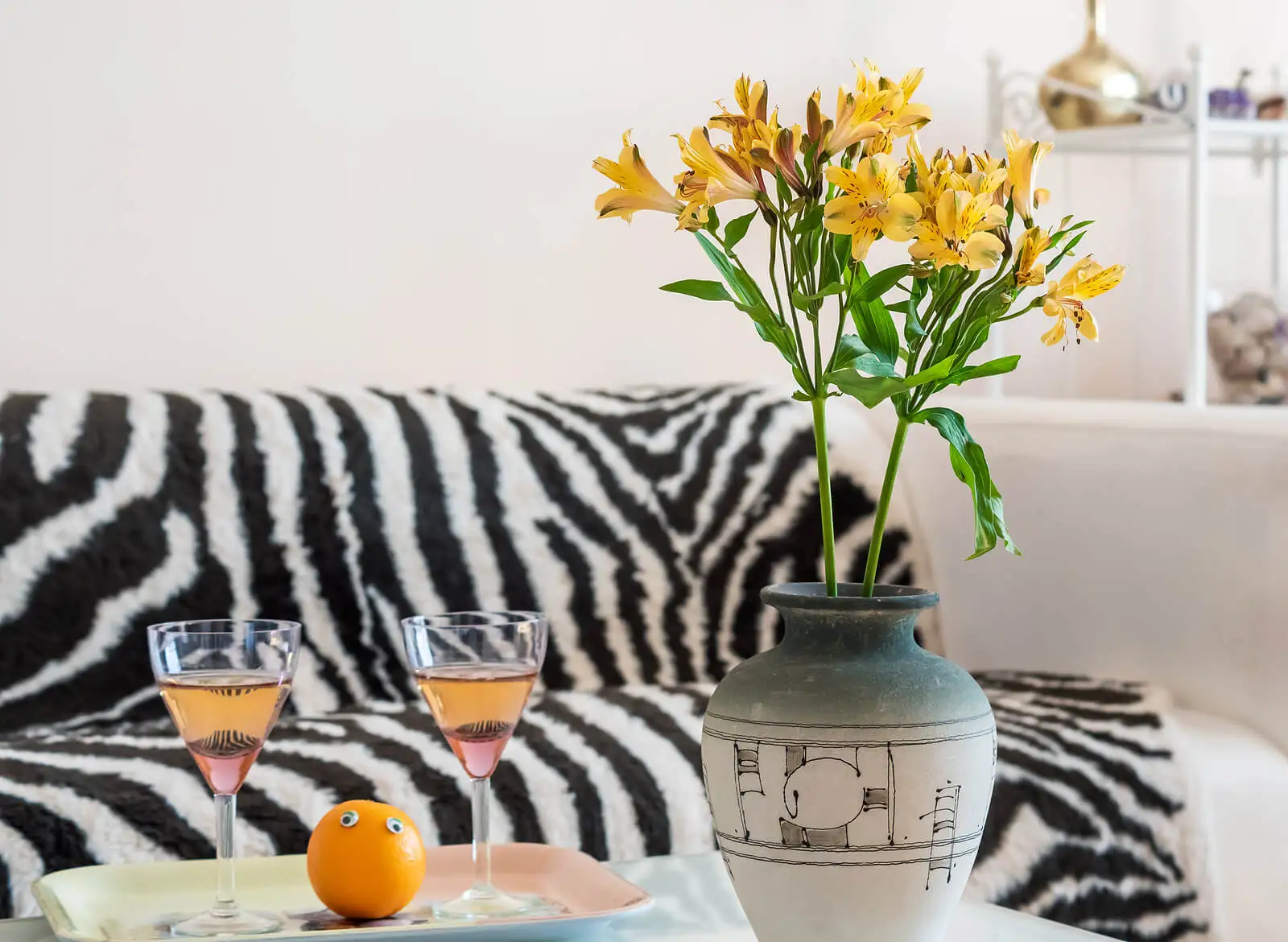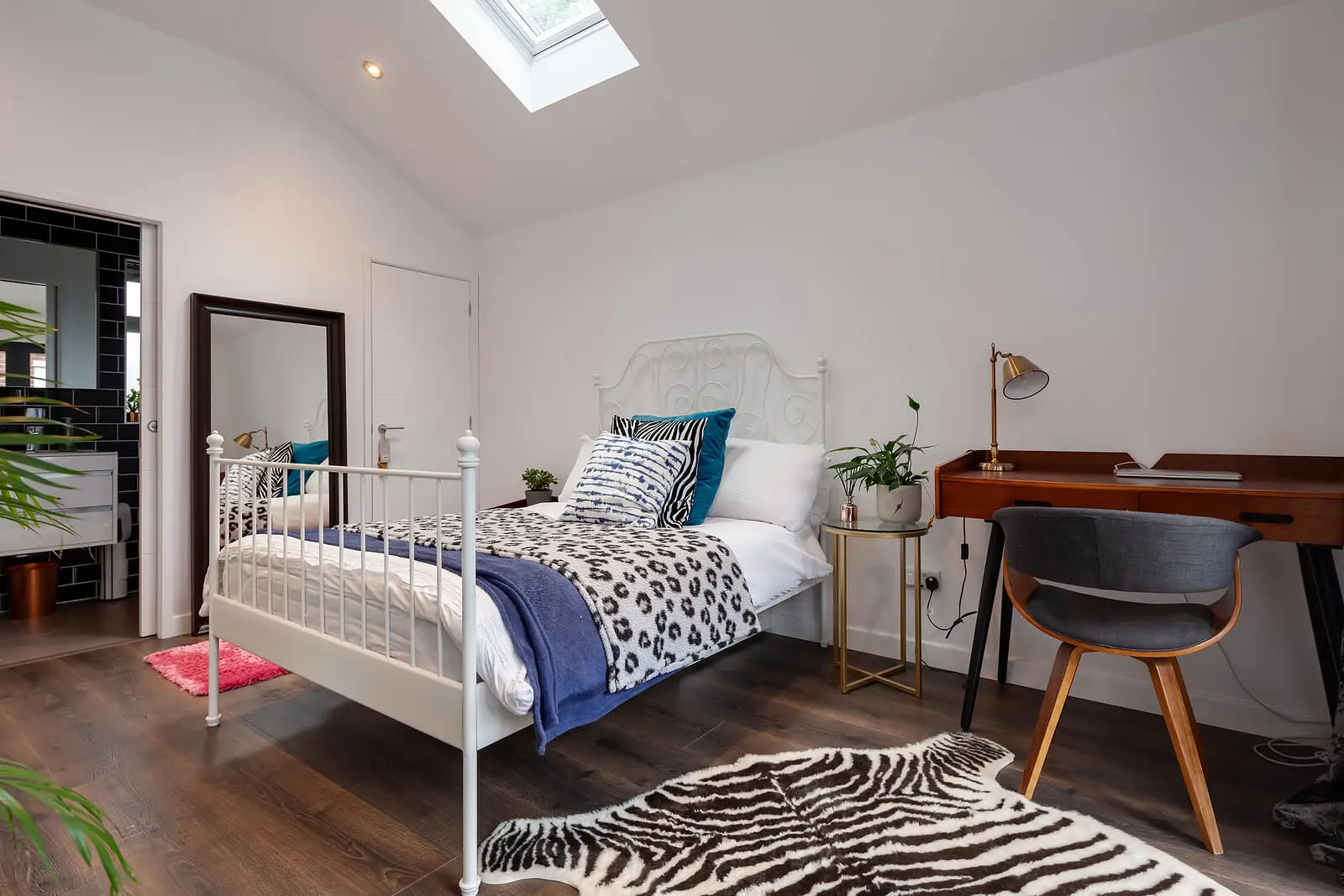6 Tips to Get it Right with Animal Print Home Décor

Animal prints are often found in clothing, but they can also be used in home decoration. This fashion concept is one of the most striking to decorate the home, whether it be implemented in your furniture, curtains, carpets, or even tableware.
Whether very discreet or quite expressive, the patterns proposed by the style give any room an exotic and unconventional touch. Of course, you have to be careful when working with animal prints so that you don’t go overboard.
If you want to decorate your home with this timeless trend, consider the suggestions that we will reveal and that will play in favor of the process. Take note!
All about animal print
The definition of animal print is quite simple: “referring to a fabric whose print imitates animal skins”.
On the other hand, Ohio State University refers in an article that, in the past, animal prints represented a symbol of power. In fact, kings and queens used carpets with animal prints just to show off their social status.
Some people believed that these pieces transmitted to their owners the strength of the hunted beasts.
However, today, animal print is used in fashion and interior design without marking a distance between its followers and social classes, since you can find decorative items with these prints at any price range.
Another difference between the utility it received in the past and the contemporary use is that you do not have to resort to hunting to get a decorative fabric. Nowadays, these fabrics are made with synthetic fabrics similar to animal skins to prevent the suffering to which many species were subjected.
Animal print decorations went from being very eccentric to show subtle and elegant details. They often exhibit smooth prints or textures such as fur.
We think you may be interested in reading this, too: Feng Shui Ball: What Is It and How Can You Integrate It Into Your Decor?

Trends in animal print decoration
It’s common that the first prints we think of when talking about animal print are leopard and tiger. Yes, they may be the most popular, but they’re not the only ones. Apart from these classics, there’s a varied catalog of timeless patterns.
Let’s take a look at some of them:
- Cows print
- Zebras print
- Giraffes print
- Lizards print
- Cheetah print
- Snake print
- Peacock print
To this list are added other tropical drawings such as exotic birds, as well as pastel colors to break with conventional schemes and approach fantasy.
Therefore, it’s not uncommon to find cushions, rugs, and other decorative accessories similar to the skin of a zebra, but combining blue and white tones, for example.
We think you may be interested in reading this, too: 10 Oriental Decorating Tips that You Can Apply in Your Home
Recommendations to successfully decorate with animal print
Animal print is feasible to decorate the house including furniture, rugs, and ceramics. It can be used in the living room, in the dining area, and in the bedrooms of adults and children. For a successful result, take note of the following tips.
1. Use them prudently
There are those who prefer the wildness of animal print in large quantities, but restraint will make your space look more elegant.
Don’t fill your whole house with fur when you can use just a rug in the living room or cushions on one-color furniture. A sofa cover, a puff, or a small wall with animal print wallpaper is enough.
2. It’s all about subtlety in the tones
If the color of the print is soft, it’s OK to cover a wider area. Cover several walls with light-toned wallpaper, so you don’t overload the scenery.
And if you want to upholster a piece of furniture, ask the company in charge to design the pattern with a renewed palette, so that you stick to the paints, but in a subtle range.
3. Bring animal prints into the kitchen
An animal print quilted dining room set, a tablecloth, tiles, and tableware are also ways to bring the style into the kitchen without overdoing it.
4. Pay attention to the details
A picture with a photograph of a giraffe skin or painted borders or zebra-striped bedding are small but appropriate details for animal decoration.
This means that it isn’t necessary to fill the spaces with large, colorful signs of the art in question; a few significant items often does the trick.
5. A style within a style
Instead of mixing different prints, it’s best to put together the style with what goes in the same line. Patterns are already eye-catching, so it’s not worth cluttering the room with various types of paint.
If you go for leopard, let it be only leopard. If you opt for a flamingo patterned wall, don’t add other items with tabby stripes. There is a fine line between personalization and extravagance; try not to cross it.
6. Consider mixing animal prints with other materials
Since the key is not to oversaturate the space, you can balance the decoration by incorporating wooden furniture or fiber accessories such as jute or wicker. This creates harmony without detracting from the animal print look. Wall moldings and marble tabletops are sensible and complementary alternatives to the trend.

Like this article? You may also like to read: Discover 20 Types of Aloe to Decorate Your Home and Garden
What not to do when decorating with animal print
The purpose of the decorations is originality, but don’t let the whole thing get out of hand. While the animal print decor is relevant, it’s best to stay away from furnishings with parts such as feline heads on the ends, arms simulating snakes, or paws with claws. Even if they’re recreated pieces, they’re a little excessive and some people consider them unpleasant.
Giving volume to the print is another mistake since this doesn’t always look good. In fact, getting the advice of an expert in interior design is a good idea to balance the animal print ambiance. However, if you venture into this decor alone, the above tips will surely be of great help.
All cited sources were thoroughly reviewed by our team to ensure their quality, reliability, currency, and validity. The bibliography of this article was considered reliable and of academic or scientific accuracy.
- Redacción Neoma Prensa de Murcia y Alicante. Animal print. Diccionario de Neologismos del Español Actual. Universidad de Murcia. https://www.um.es/neologismos/index.php/v/neologismo/508/animal-print#:~:text=Definici%C3%B3n,las%20pieles%20de%20los%20animales.
- Thibault.21. (2018). La historia detrás del estampado de animales. Líneas de Ropa. Blog de la colección de trajes y textiles históricos. Universidad Estatal de Ohio. https://u.osu.edu/clotheslines/2018/11/16/the-history-behind-animal-prints/
This text is provided for informational purposes only and does not replace consultation with a professional. If in doubt, consult your specialist.








